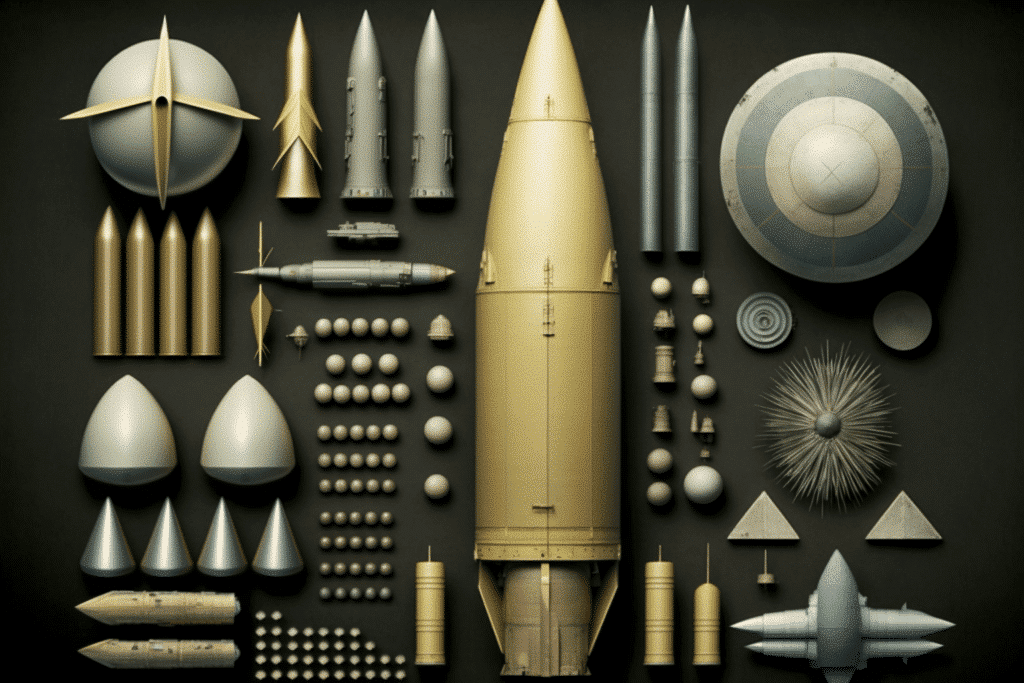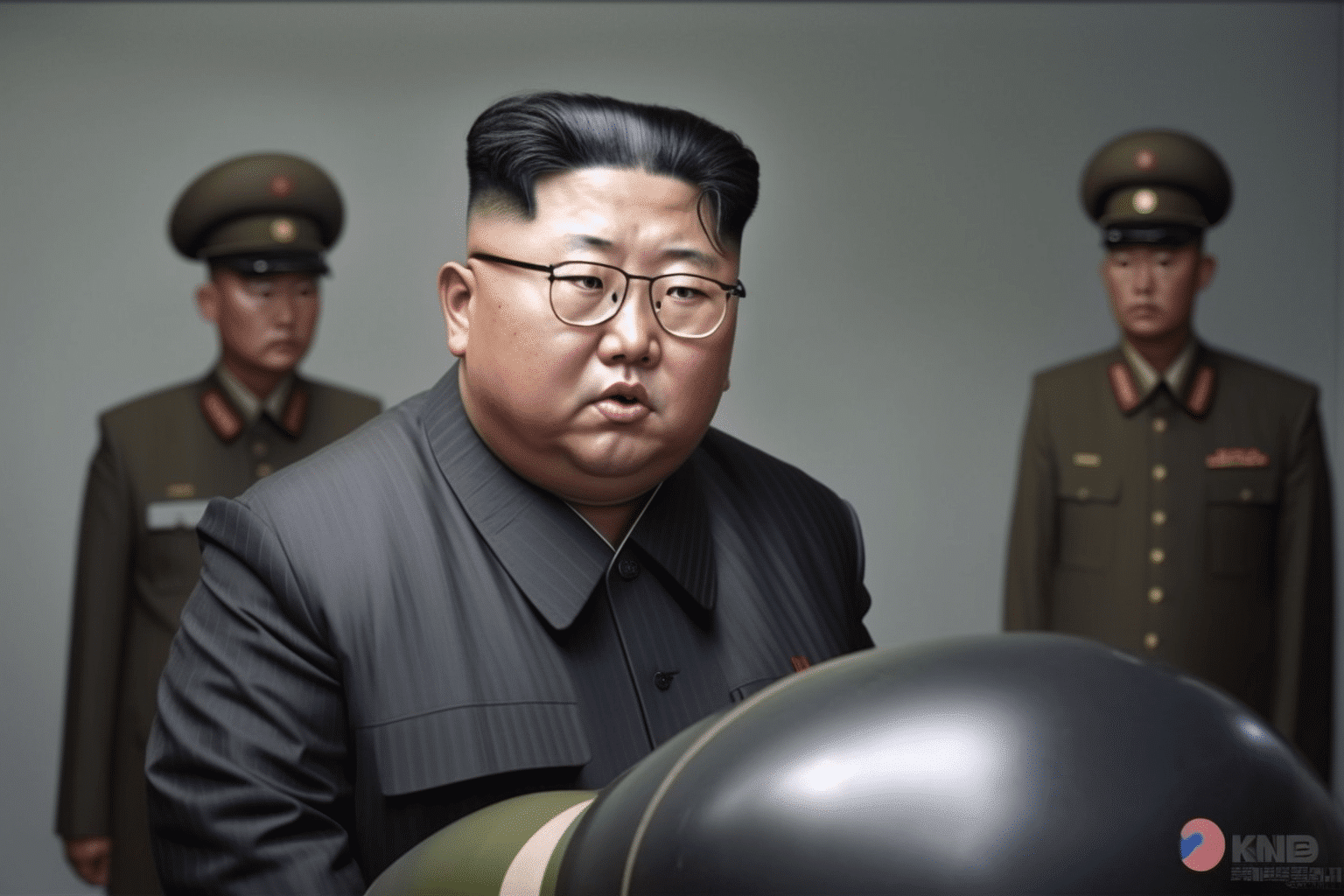North Korean leader Kim Jong Un has instructed nuclear scientists to ramp up the production of weapons-grade materials for use in the country’s growing arsenal of armaments. Images from the meeting revealed what seemed to be a compact new tactical warhead that could be compatible with various delivery systems developed recently to bypass South Korean defences.
This report comes after a series of missile launches this month and increased threats of using the weapons against North Korea’s adversaries. The situation in the region has been escalating due to both North Korean weapons tests and joint U.S.-South Korean military exercises.
Analysts predict North Korea’s nuclear program will continue to provoke in the coming weeks and months, possibly with the detonation of its first atomic device since September 2017. Kim said the nuclear industry had essential tasks to perform during a meeting with government officials and scientists at the state nuclear weapons institute.
Kim also reviewed established plans for nuclear counterattacks while receiving briefings on the latest nuclear-capable weapons systems and technological advancements for attaching atomic warheads to missiles.
Images from the meeting showcased Kim in a hall displaying various types of warheads, including around ten green capsules with red tips and other weapons resembling cones with fins or large torpedoes. The Hwasan-31 warhead, named after the Korean word for a volcano, was also displayed, suggesting progress in North Korea’s efforts to miniaturize a warhead that could be attached to its delivery systems.
Analysts believe these reports indicate North Korea is moving closer to its next nuclear test. North Korea likely possesses dozens of nuclear warheads that can be fitted onto some of its older systems, like Scuds or Rodong missiles. South Korean military officials are analyzing the warhead shown in the North Korean images but have not provided specific assessments.
It comes after Russian President Vladimir Putin announced plans to deploy tactical nuclear weapons in Belarus, a neighbour of North Korea. Kim’s call to increase bomb fuel production follows Putin’s announcement. North Korea has expressed support for Russia’s invasion of Ukraine and emphasized tripartite cooperation with Moscow and Beijing to counter a “new Cold War” instigated by the “U.S. imperialists.”
A South Korean defence document released in February estimates North Korea has 70 kilograms (154 pounds) of weapons-grade plutonium, which could be enough for about nine to 18 bombs. The document also states that North Korea has a considerable amount of highly enriched uranium.
A primary nuclear complex in North Korea, Yongbyon, can produce both plutonium and highly enriched uranium, which are necessary to build atomic weapons. In addition to the Yongbyon uranium enrichment facility, North Korea is believed to operate at least one covert facility.
Korea Central News Agency (KCNA) reports that North Korea is testing nuclear-capable missiles and a purported underwater attack drone this week and has detonated mock warheads. These reports came after neighbouring militaries detected North Korea launching two short-range ballistic missiles off its eastern coast.
To negotiate economic concessions, the North seeks to leverage its nuclear arsenal as a legitimate nuclear power and to force the United States to recognize it as a legitimate nuclear power.

North Korea has experienced a record year in weapons testing, launching over 70 missiles in 2022. As part of its nuclear doctrine, the country can launch preemptive atomic strikes in various situations where its leadership is at risk.
The USS Nimitz, a nuclear-powered aircraft carrier, conducted joint training with South Korean warships. This display of strength comes amid North Korea’s continued missile testing and escalating tensions in the region. North Korea’s official Rodong Sinmun newspaper condemned the joint exercises and U.S. deployment of the Nimitz strike group, calling it an “open declaration of war.”
KCNA reported that the missiles tested on Monday were equipped with mock nuclear warheads that detonated as planned 500 meters (1,640 feet) above their sea targets. A front-line unit tested rockets as part of a training exercise to familiarize troops with nuclear attack orders.
The Korean Central News Agency (KCNA) reported that North Korea had tested an underwater nuclear attack drone capable of triggering a “radioactive tsunami” to destroy enemy ships and ports. However, analysts and South Korea’s Joint Chiefs of Staff have expressed skepticism regarding these claims, suggesting that they are likely “exaggerated or fabricated.”
Despite doubts surrounding the underwater drone, Kim Jong Un’s commitment to expanding North Korea’s nuclear arsenal remains unwavering. As the country continues to develop its nuclear capabilities, it aims to compel the United States to acknowledge it as a legitimate nuclear power and negotiate from a position of strength for economic concessions and security guarantees.
The international community, particularly the United States, South Korea, and Japan, has been increasingly concerned about advancements in North Korea’s nuclear and missile technology. Efforts to engage in diplomacy and denuclearization talks have stalled, with North Korea showing little interest in returning to the negotiation table.
As tensions continue to escalate, regional stability and the potential for conflict are growing concerns. The United States and its allies have been working to strengthen their defence capabilities and foster cooperation in response to the North Korean threat. This includes joint military exercises, intelligence sharing, and deploying advanced defence systems.
Sanctions have been a primary tool for the international community to pressure North Korea into halting its nuclear and missile programs. However, these measures have had limited success. The North Korean regime has continued to develop its weapons capabilities and evade sanctions through various means, such as illicit trade and cyber operations.
The international community must develop a comprehensive strategy to address the North Korean threat. This may involve a combination of diplomatic efforts, economic pressure, and military deterrence, as well as engaging with regional partners such as China and Russia to seek cooperation in resolving the issue.
Ultimately, finding a peaceful solution to the North Korean nuclear issue will require patience, creativity, and a willingness to engage in dialogue, even as the situation remains tense and uncertain.




